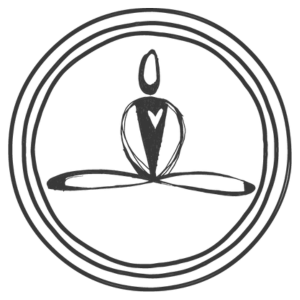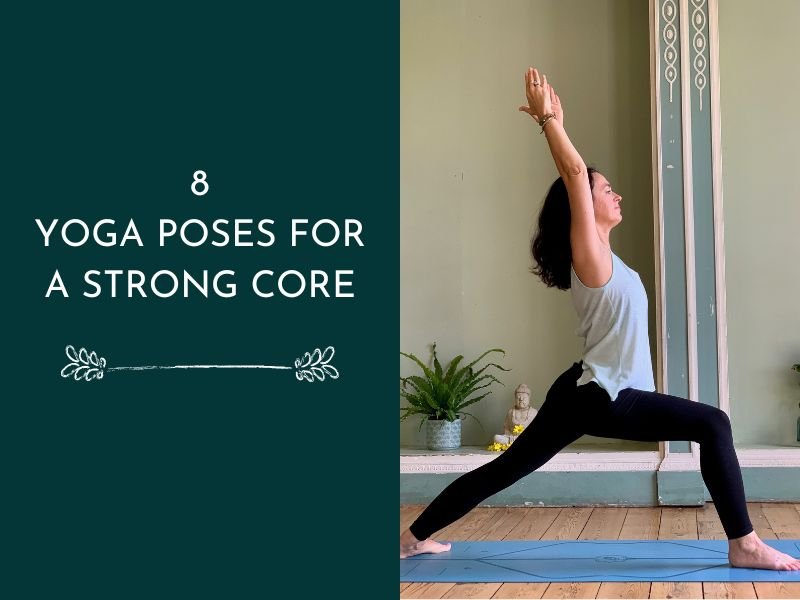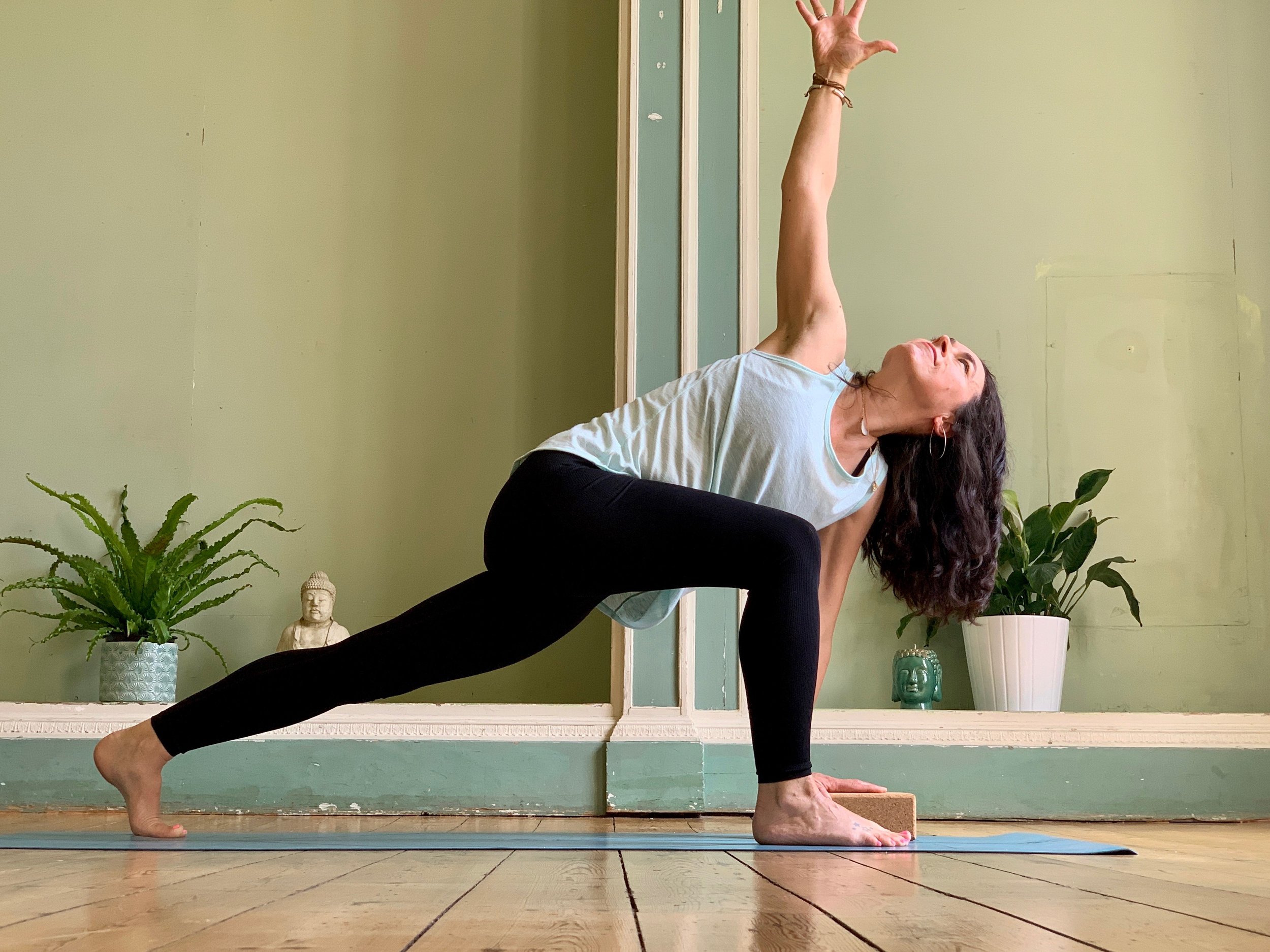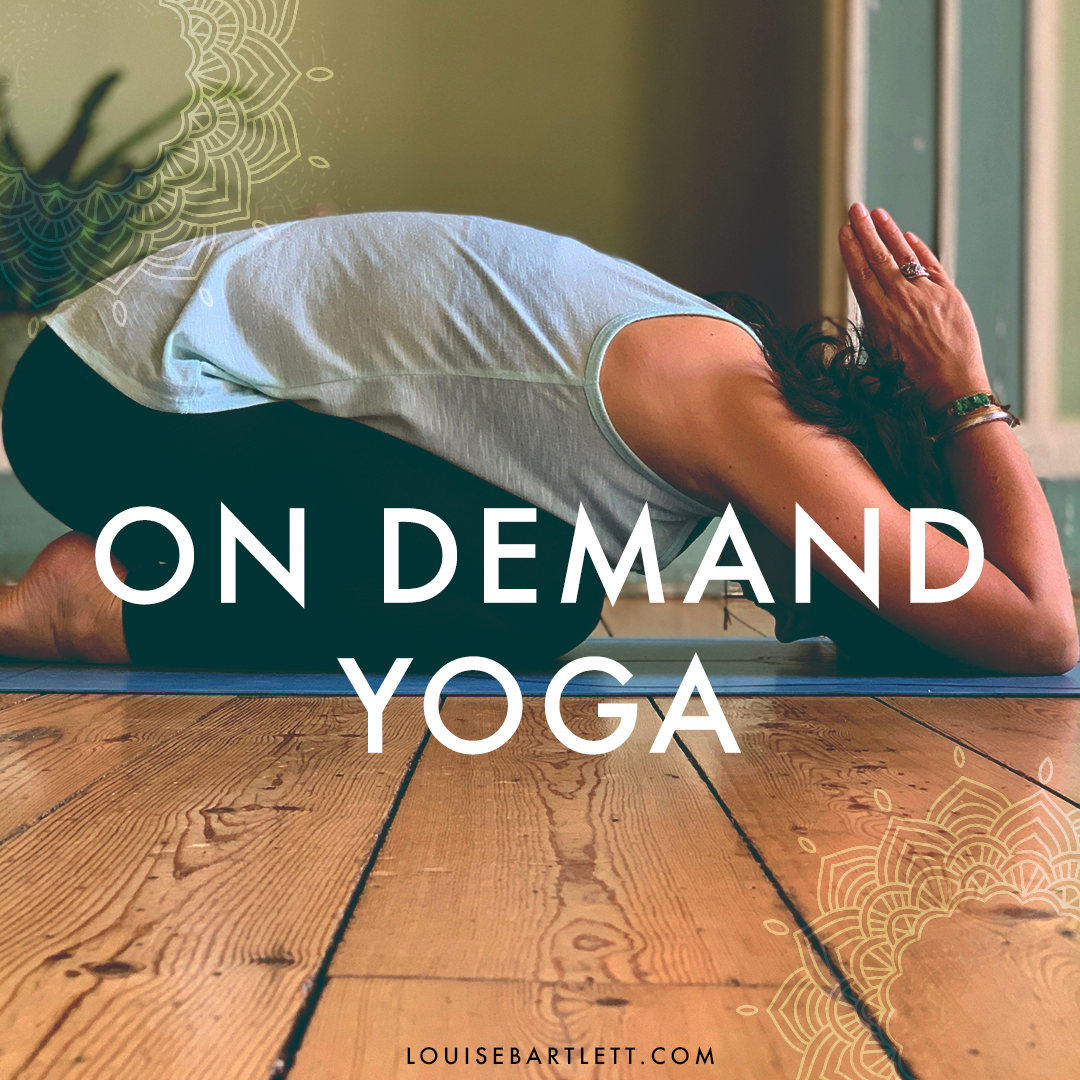8 Yoga Poses For a Strong Core
If you're looking for ways to strengthen your core and improve your overall health, yoga is an excellent practise to weave into your daily routine. While you may think yoga classes are slow, meditative movements or fluid transitions between poses, there are specific yoga postures that can help you build energy, growth and resilience in your core.
In this post, I'll share 8 powerful yoga poses that can help you develop a strong and stable centre. Whether you're new to yoga or an experienced practitioner, these poses can help you unlock the full potential of your core muscles and improve your overall physical health and wellbeing.
1.Parivrtta Parsvakonasana (Revolving Side Angle Pose)
Revolving Side Angle Pose, or Parivrtta Parsvakonasana in Sanskrit, is a powerful yoga posture that helps to strengthen the legs, hips and core muscles, while also opening up the chest and shoulders. By twisting the spine, Revolving Side Angle Pose can also stimulate the digestive system, improving overall digestion and elimination. In addition, this posture can help to cultivate balance, concentration, and mental focus, making it a valuable addition to any yoga practice.
2. Virabhadrasana I (Victorious Warrior Pose)
Warrior pose, or Virabhadrasana I, is another powerful yoga posture that helps to strengthen the legs, hips and core muscles, while also opening up the chest and shoulders. By grounding the feet into the earth and lifting the arms high, Victorious Warrior Pose can help to cultivate a sense of strength, stability and confidence. This posture can also help to improve balance and concentration, making it a great choice for those looking to enhance their overall physical and mental wellbeing.
3. Ardha Navasana (Half Boat Pose)
Ardha Navasana, or Half Boat Pose, is a powerful yoga posture that engages and strengthens the entire core, including the abdominal muscles, back muscles, and hip flexors. This pose involves sitting with the legs extended and lifting the legs and upper body off the ground, balancing on the sit bones. Boat Pose helps to improve digestion and stimulate the internal organs, while also promoting good posture and spinal alignment. Caution: Be careful not to strain your lower back by rounding your spine. Keep your back straight and your core engaged.
4. Adho Mukha Svanasana (Downward Facing Dog Pose)
Adho Mukha Svanasana, or downward facing dog pose, strengthens the arms, shoulders, and core muscles, while also stretching the hamstrings and calves. When you practice downward facing dog, you engage your abdominals to maintain a stable and straight spine. This engagement helps to strengthen the rectus abdominis, which is the outermost layer of the abdominal muscles that is responsible for flexing the spine forward.
Also, when you press your hands and feet into the ground in downward facing dog, you activate the deep core muscles, including the transverse abdominis and the pelvic floor muscles. These muscles work together to create a stable foundation and support the spine, which can help to improve overall posture and reduce the risk of back pain. Caution: Avoid this pose if you have wrist or shoulder injuries. Keep your hands shoulder-width apart and your core engaged.
5. Vasisthasana (Side Plank Pose)
One of the primary benefits of the Side Plank Pose is that it targets the muscles of the core, including the obliques, transverse abdominis, and quadratus lumborum. When you practice side plank, you engage your oblique muscles, which are the muscles that run along the sides of your abdomen. These muscles are responsible for rotating and bending the torso, as well as stabilising the spine and pelvis.
As you lift your body off the ground in side plank, you also engage the transverse abdominis, which is the deepest layer of the abdominal muscles. This muscle helps to stabilise the spine and pelvis and supports proper posture. Also, the gluteus medius muscles on the side of the hip work to stabilise the pelvis and maintain proper alignment.
By engaging these core muscles in side plank, you can improve overall core strength and stability. This can have numerous benefits, including improved posture, reduced risk of back pain, and enhanced athletic performance in sports that require rotational movements. In this modified version, I’ve placed my forearm on the floor to provide more balance and stability.
6. Parivrtta Utkatasana (Twisted Chair Pose)
Twisted Chair Pose, or Parivrtta Utkatasana, is a challenging yoga posture that is a must for building strength and stability in the core muscles. This pose involves bending the knees and sinking the hips back as if sitting in an imaginary chair, while keeping the spine straight. Chair Pose strengthens the thighs, hips, and ankles, and engages the abdominal muscles to support the lower back. This posture also helps to improve balance and concentration and improves posture, while toning the core muscles and increasing overall body awareness.
7. Chaturanga Dandasana (Four-Limbed Staff Pose)
Chaturanga Dandasana, or Four-Limbed Staff Pose, is a yoga posture often used as a transition in Sun Salutations and Vinyasa yoga sequences. It is an excellent pose for building core strength, as it engages the muscles of the entire core, including the abdominals, obliques, lower back, and hips.
In this pose, the body is held in a plank-like position with the arms bent and close to the sides of the body. This position requires a strong core to maintain proper alignment and prevent the hips from sinking towards the ground. As a result, the abdominals and obliques are engaged to support the spine and maintain stability in the upper body.
This pose requires upper body strength, particularly in the triceps, chest, and shoulders. This strength is necessary to lower the body in a controlled manner and maintain the integrity of the pose. As a result, the muscles of the core must work even harder to support the upper body and prevent the hips from sinking.
Caution: Avoid this pose if you have wrist or shoulder injuries. Keep your elbows close to your body, fingers spread apart and your core engaged.
8. Bakasana (Crow Pose)
This pose helps to build upper body strength and engage the core muscles, while also improving balance and concentration. Caution: Avoid this pose if you have wrist or shoulder injuries. Start by practicing with blocks or a blanket to support your upper body.
Incorporating these yoga poses into your practice can help you develop a strong and resilient core, leading to improved overall physical health, wellbeing and resilience. Remember to listen to your body and modify each pose as needed. With consistency and practice, you'll soon notice the benefits of a strong and healthy core.











